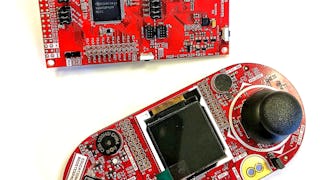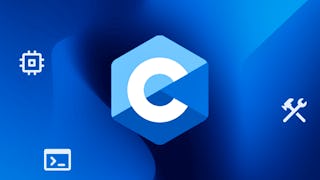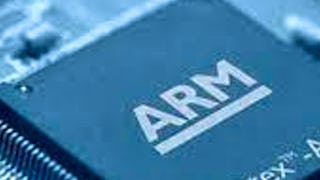Advanced BSP Development with Embedded C is an advanced-level course designed for experienced embedded developers ready to master low-level firmware design. As embedded systems grow in complexity, production-grade reliability depends on your ability to control every aspect of board initialization—from startup code and memory layout to peripheral abstraction and register-level configuration.



Advanced BSP Development with Embedded C

Instructor: Hurix Digital
Access provided by Yenepoya University
Recommended experience
Skills you'll gain
- System Software
- Product Family Engineering
- Embedded Software
- Hardware Troubleshooting
- Computer Hardware
- Maintainability
- System Programming
- Debugging
- Software Design
- C (Programming Language)
- Software Design Patterns
- Embedded Systems
- System Configuration
- Peripheral Devices
- Real-Time Operating Systems
- Serial Peripheral Interface
- Real Time Data
- Performance Tuning
- Cross Platform Development
- Hardware Architecture
Details to know

Add to your LinkedIn profile
November 2025
See how employees at top companies are mastering in-demand skills

There are 3 modules in this course
This introductory lesson breaks down what happens in the first milliseconds of embedded execution. Learners will explore startup code and linker scripts to define how their board boots and how memory is mapped. Case studies like NASA’s Mars Rover and NXP’s modular linker strategies help bring these low-level concepts into real-world focus.
What's included
4 videos2 readings1 assignment1 plugin
Learners will dive into device driver design—from GPIOs to UARTs—and learn how to build safe, reusable modules that communicate with hardware using register-level logic. Case studies from Tesla’s Autopilot system and STMicroelectronics’ STM32Cube highlight best practices in high-reliability environments.
What's included
2 videos1 reading1 assignment1 plugin
In the last lesson, the larners learn to extract what matters from hardware datasheets and memory maps. You’ll identify peripheral base addresses, decode register functions, and navigate bitfields with confidence. Case examples from TP-Link and STMicroelectronics show how datasheet literacy impacts debugging, safety, and scaling.
What's included
3 videos1 reading3 assignments1 plugin
Instructor

Offered by
Why people choose Coursera for their career




Explore more from Computer Science

University of Colorado Boulder
¹ Some assignments in this course are AI-graded. For these assignments, your data will be used in accordance with Coursera's Privacy Notice.




